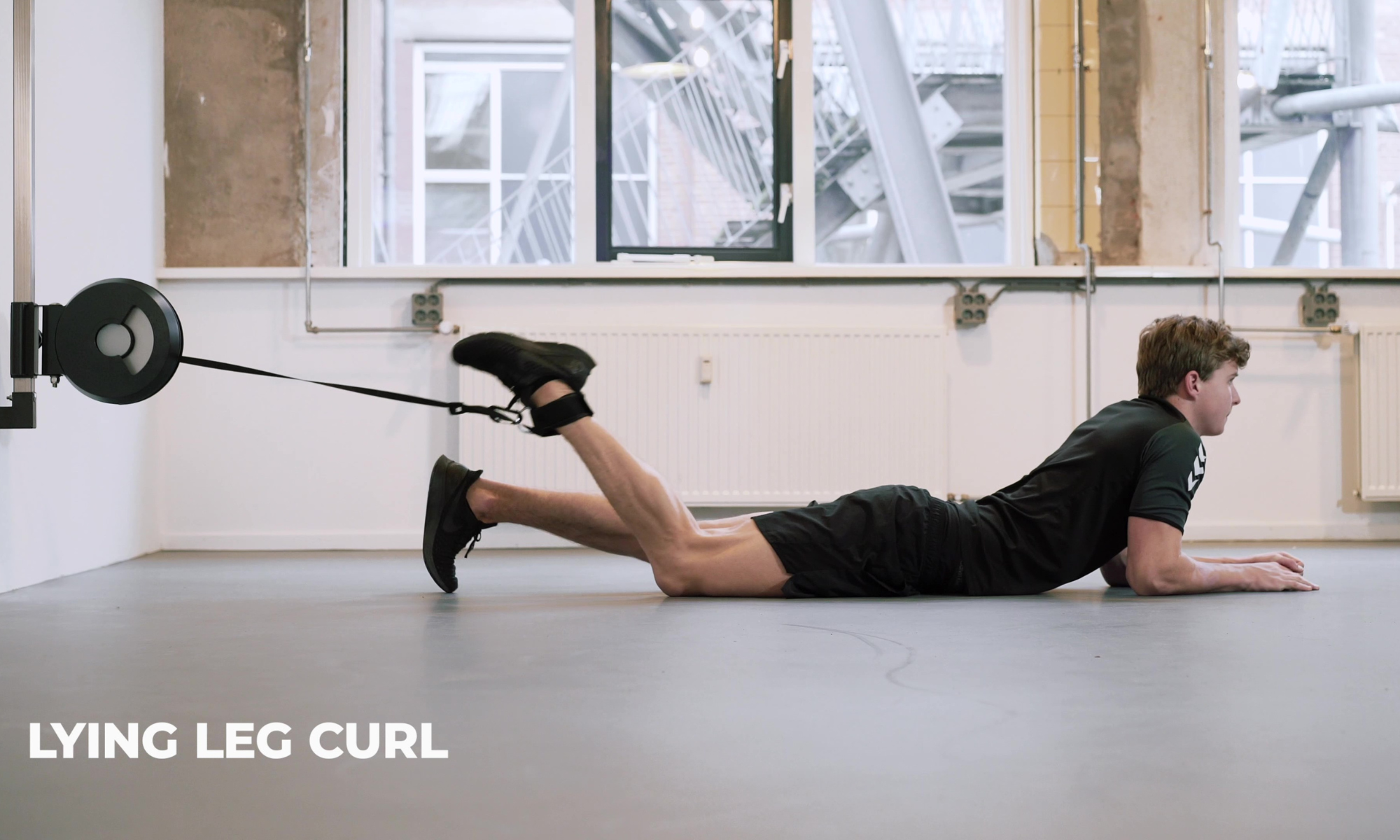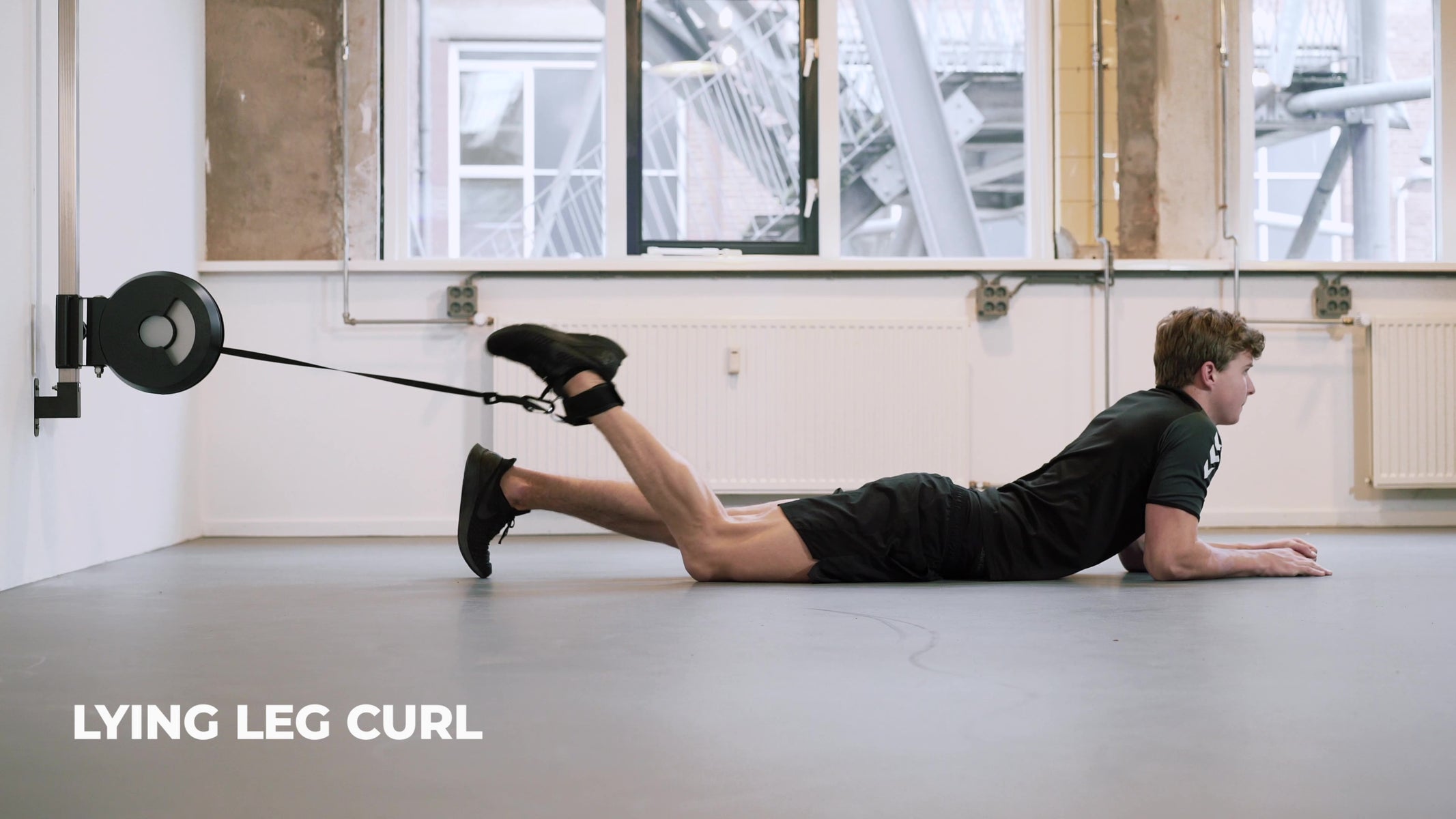What is Flywheel training
Flywheel training is a strength training modality that relies on the resistance of an flywheel instead of standard traditional training with weights. One of the important aspects of flywheel training is that it offers the possibility of performing exercises with eccentric overload and variable resistance. Check out our portable and stationary Flywheel devices here.

“The effectiveness of (inertial) Flywheel Training, from rehabilitation to performance enhancement, has been proven by a lot of research.” – strength and conditioning coach Zsolt Pozsonyi
Flywheel training gained interest when NASA and the European Space Agency started using it with their astronauts in weightless space. It is a unique development in sport and physiotherapy. Training with a inertial flywheel is also called kinetic training or isoinertial training.
How does Flywheel Training work
Flywheel training works with a rotating disc, instead of traditional weights. The disc – also called inertial flywheel – is attached to a cord. When you pull the cord, the inertial flywheel starts rotating. During this acceleration, you experience resistance. This part of the movement is called a concentric movement.
Once the cord is fully unwind, the inertial flywheel maintains its rotation speed and will automatically pull the cord back, just like a yo-yo. You now need to slow the flywheel down by decelerating it. This part of the movement is called an eccentric movement. It is this eccentric movement that makes flywheel training so unique and effective. That’s why we wrote a full must read blog about it: How to create Eccentric Overload in Flywheel Training.
Flywheel training vs traditional weights: what’s the difference
Traditional weight training relies on gravity while flywheel inertial training is based on kinetic energy. As a result, the first noticeable difference is that a flywheel exercise machine can generate a lot of resistance without being heavy.
During a flywheel workout, you experience that the energy you put into the concentric phase (pull) equals the energy that you need to put into the eccentric phase (deceleration), to slow the flywheel down. This is something we are not used to in traditional strength training. In other words: during a flywheel workout you experience a constant resistance.
As a result, there is more emphasis on the eccentric (over)load than in weight training. This is exactly what makes flywheel training so effective.

|
 |
Benefits of Flywheel Training
The higher forces in the eccentric movement result in a more intense and effective training. Various studies have shown that flywheel training has significantly more effect on muscle strength, speed, power and size (flywheel training hypertrophy).
Looking at functional strength, flywheel training is proven to improve performance-related abilities like jump height and running speed to a greater extent than traditional training.
Science also shows that flywheel training is a very suitable treatment method in physiotherapy, injury prevention and rehabilitation. Especially in tendon injuries like Patellar Tendinopathy and Rotator Cuff Tendinopathy. But also in hamstring injuries and rehabilitation for patients recovering from a stroke.
Suggested blog: Fitness Infuencer Review of the Kynett FIT Flywheel
Contact us
Curious how flywheel training can contribute? View our products or contact us! We like to think along with you.
FAQ
By listening carefully to the wishes of the customer and by gaining more in-depth knowledge about everything concerning flywheel training, Kynett has expanded its range with various mobile devices and accessories which make training with Kynett even more fun, more intensive and more challenging. Moreover, the production and assembly is all carried out inhouse and is entirely located in the Netherlands.
With all of our products, you are able to train your entire body. On the website there are a number of instructional videos. It is very easy to think up and try sport specific exercises yourself, think tennis, boxing, golf etc.
Eccentric training improves strength, speed, power and performance related skills such as jump height and running speed to a greater extent than concentric or traditional training. But what do we mean by eccentric training and eccentric overload? Lifting a weight with your biceps is a good example of a concentric movement. Your muscles become shorter and therefore lift the weight to the ceiling. As you lengthen your muscles again, the weight returns to the starting position. Lengthening the muscles and thus lowering the weight is called an eccentric movement. Flywheel training exercises are also more multifunctional, because at the beginning of the eccentric phase, you have to slow down and stay balanced. This will train more muscles (including your abdominal muscles) and improve your balance.
The Kynett HOME Flywheel makes flywheel training affordable and easy at home. Due to the compact and durable design, the Kynett HOME Flywheel takes up almost no space. The weight of the resistance is determined by means of resistance discs. The Kynett HOME Flywheel comes standard with two 4 mm thick discs. Lighter resistance discs of 3 mm or heavier discs of 5 mm can also be used. A maximum of one disc per side can be used. The discs can be combined, but you can also train with one disc. This way you determine the intensity of the training yourself.
The Kynett FIT is made from durable and sturdy materials and comes with a steel support and two ratchet straps, so you can train wherever you want! With this innovative way of training, all muscle groups can be trained within 1.5 square meters. The Kynett FIT comes standard with two 4 mmthick resistance discs and offers the possibility to train with heavier resistance than the Kynett HOME. Resistance discs of 2, 3, 4, 6, 8, 10, 12 and 15 millimeters are compatible with the Kynett FIT! The Kynett FIT can also be attached on the wall with the mounting set.
The Kynett PRO Flywheel is made from durable and sturdy materials and comes with a solid wall mount. This makes the Kynett PRO Flywheel very easy to adjust to different heights and the possibilities are endless. With this innovative way of training, all muscle groups can be trained within 1.5 square meters. The Kynett PRO Flywheel comes standard with two 4 mm-thick resistance discs and offers the possibility to train with heavier resistance than the Kynett HOME Flywheel. Resistance discs of 2, 3, 4, 6, 8, 10, 12 and 15 millimeters are compatible with the Kynett PRO Flywheel!
The most complete and extensive set in our range! With this multifunctional wall setup you have everything in one! The innovative design makes it possible to switch between upper and lower body in no time. The pulleys at the top and bottom make it possible to perform all exercises within a range of 1.5 meters, which results in an enormous space and cost saving compared to renting/ purchasing expensive fitness equipment and large spaces. In addition, the Kynett ULTIMATE Flywheel offers the possibility to train with heavier resistances than the Kynett HOME. Resistance discs of 2, 3, 4, 6, 8, 10, 12 and 15 millimeters are compatible with the Kynett ULTIMATE Flywheel!
The resistance with which you train is not expressed in kilograms, but in a moment of inertia: kgm2. Every object that can rotate around a certain axis has a so-called moment of inertia. Based on the mass and dimensions of the rotating disc, the moment of inertia can be calculated.
You can easily order via our webshop. But if you prefer personal contact, please send an e-mail to info@kynett.com




















